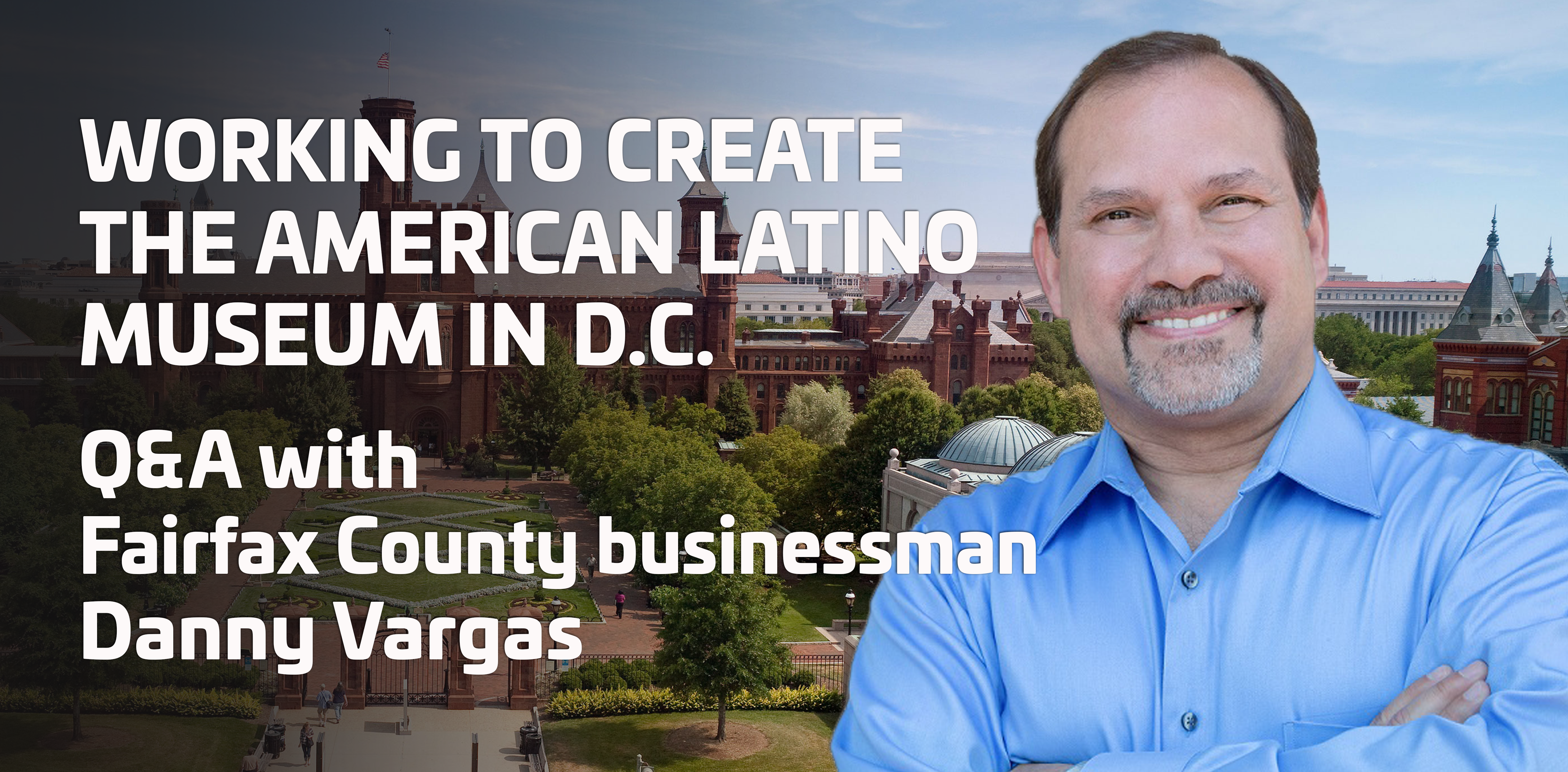E-Newsletter
Q&A with Raul Danny Vargas, Herndon-based business and community leader

In celebration of National Hispanic Heritage Month, the Fairfax County Economic Development Authority interviewed Herndon-based Raul Danny Vargas. A business and community leader at the local, state and national level, Vargas has been one of the leaders of a movement to build the National Museum of the American Latino on the National Mall in Washington, D.C.
A U.S. Air Force veteran, Vargas served seven years on active duty in national security missions and later worked for Raytheon. He was an executive at AOL, France Telecom, and Global One leading sales and marketing efforts before founding Varcom Solutions, a marketing, public relations and professional services firm.
Vargas has worn many community hats as well. He is the secretary of the Virginia State Advisory Committee to the U.S. Commission on Civil Rights, and chairman of Leadership Fairfax. He chaired the Virginia Board of Workforce Development; served as chairman of the Dulles Regional Chamber of Commerce and was the first Hispanic to chair a mainstream chamber in Virginia history; and spent several years on the board of the Northern Virginia Chamber of Commerce.
FCEDA: Why is a National American Latino museum important for the community?
Vargas: This effort goes back 27 years when the task force was formed by the Smithsonian Institution to see how they were doing in terms of portraying Latino stories in their galleries and exhibits. Among their recommendations was the creation of the National American Latino Museum.
Several years later, in 2003, was the first effort to create a commission to study the feasibility of a museum. It didn’t pass until 2008 and signed into law by President Bush. I was appointed by Congress to that commission. We came up with three basic findings: there was a clear and present need for the museum; it should be part of the Smithsonian; and that it really ought to be on the National Mall.
Why? Because there are stories of those contributions over the past 500 years that were missing in our museums, that were absent from our textbooks, and it is only to the benefit of not only the Latino community but for all Americans to get a better sense of our history as a nation.
The Census tells us now that we are 62 million people, nearly 20 percent of the population, and by the year 2060 will be 30 percent of the population. So it’s important that average Americans understand not just the contributions, but the complexity of the community.
FCEDA: How did you become involved with the efforts to build the National American Latino Museum?
Vargas: I was appointed by Congress to a commission to study the feasibility of creating a National American Latino museum with people like Eva Longoria and Emilio Estefan and others. We traveled all around the country to gather input from citizens. We subsequently delivered our report to Congress and President Obama in May of 2011. I became part of the board of the 501(c)3 “friends of” group that same year, and I became chairman of that nonprofit in December 2016. We revamped all the messaging and the approach to it to be able to garner additional support in Congress. It was included in an omnibus bill that was signed into law in December 2016. My term as chairman ended in December 2020. I’m now on the search committee for the founding executive director of the museum.
When I came in as the chairman, we were very purposeful around building a national, bipartisan, unifying, positive coalition of national organizations of influential individuals from across the spectrum. Right, left, and center. We had over 100 partner organizations. We were able to show the country not only what could be done, but how to get it done.
FCEDA: What are the next steps in the process of setting up the museum?
Vargas: The Smithsonian has already appointed the 19-member board of trustees. We’re in the process now of identifying and hiring the first permanent executive director. The next fight is going to be to get a location on the National Mall.
After that, fundraising will be the big issue. It’s a 50/50 public private-partnership. We had estimated back in 2011 that it would cost about $600 million to open the doors. So in a 50/50 proposition, that’s $300 million of people’s money and then raising $300 million of private-sector donations. With inflation, it might have gone from $600 million to $650 or $700 million.
We’ll see what the planning and architectural folks tell us. But then the curating and then the collection of artifacts, and all of that is going to have to take place. It’s going to be a challenge for any director of the museum to tell this multidimensional story: 23, 24 different countries of origin, 500-plus years of history, the diaspora throughout the country, and all of those complex stories.
It’s going to be fascinating, and it will take you on a journey. If nothing else, I would guarantee it will have the best food court in the history of mankind.
FCEDA: What is the timeline to open the museum?
Vargas: My best guess is eight to 10 years.
FCEDA: When and why did you move to Northern Virginia?
Vargas: When I got out of on the Air Force I took a job with a contractor that was based in Pennsylvania. But my customer was in Northern Virginia, so I was going back and forth all the time. After about eight months I moved to Northern Virginia. That was in 1991. I figured I’d give it a shot for about a year, and that was 30 years ago.
News Travels Fast
Stay ahead of the curve with the latest business news from Northern Virginia. Receive updates on moves, incentives, workforce, events and more.